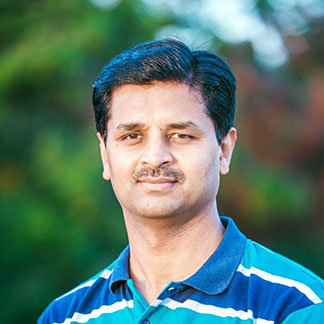Have you ever wondered why your biller sends you bill payment reminders even after you have paid their bill via a third-party app or website? Have you ever gone through the embarrassment of your debit card transaction getting declined minutes after your account got debited??? Or how does it feel to provide your educational certificates to a prospective employer, each time you apply for a new work opportunity? That’s quite a chore, isn’t it?
These problems happen not because of bad design but because of lack of collaboration and trust. Each organization maintains its own database, which is not shared with the outside world. That causes data duplication, data obsolescence and coupled with network outages, becomes a perfect recipe for data integrity issues.
Don’t you think there should be a common database that must be open, updated, verified, secure and decentralized? This would prevent sharing of same data with multiple sources, avoid duplication, assure data integrity and prevent processing delays. Rest assured that the world is at the cusp of this revolution and it is called “Blockchain”.
Blockchain, is the answer to data problems… It was created to be the railroad for BitCoin, the crypto currency invented by Satoshi Nakamoto at the turn of this decade. While BitCoin itself has gone into a tumultuous evolution chain, “here today and gone tomorrow” types, Blockchain has somehow caught the fancy of the world, especially the business community.
Simply put, Blockchain is a database. But what makes it exceptional is the ability to share, collaborate and democratize its usage. There is no single “central” repository for a Blockchain. It is everywhere and with every participant. Everybody’s copy is ORIGINAL, well, at least up to the time it was last updated. Blockchain brings about the Finality of data and information once entered cannot be modified. You can only enter a new block to the blockchain, but cannot modify existing closed blocks. This brings in assurance, auditability and trust.
What are the practical applications for Blockchain? Blockchain can be used in any area where data collaboration plays a key role. An area where data is being updated at regular intervals, by different parties, and more specifically where a single entity goes through different mutations, or passes hands and it is imperative to record each change and ownership to provide an accurate and complete picture.
Let us take the case of a car. Currently, car manufacturers can link a fully manufactured car to its predecessor, which was steel, added with some tyres, bolts, nuts, electrical and upholstery!! Even though this has only theoretical implication for outsiders like you and me, for the car manufacturer it would make sense to track an output from the raw material stage to showroom stage. But, this data is private and only they can access it.
As the car moves out of the showroom to its buyer’s house, there is a change of ownership that needs to be updated in a public registry, currently being the local transport authorities. Nothing much happens beyond that in terms of standardized recording of information related to the vehicle.
With a Blockchain for automobiles, each milestone for the car, be it a regular service maintenance workshop visit, or a toll payment, a speeding ticket from police, any involvement in road accidents, its insurance history etc can all be tagged to the car, by the respective service providers.
For example, the insurance company can update a car’s insurance details, Police Department can tag any speeding ticket / accident information to the car’s public registry. Since, all this information comes from verified sources, we need not have any doubts about its authenticity. All this data can be part of the miniature blocks in the bigger blockchain for automobiles.
Tomorrow if the car is sold, the prospective buyer just needs to look up this public blockchain registry and can access the complete life history of the car, from the manufacturing stage, to its ownership, accident history, maintenance history and make an informed decision about the purchase. The resultant sale transaction would also get added to the blockchain as another entry and would again be available in public domain for others to verify.
Blockchain can be used to store a vast multitude of use cases like personal health, property ownership, trade transactions, banking transactions, human medical history and many more.
Blockchain is the signal of the world going Digital. Digital fundamentally means breaking silos. Information cannot be bucketed into partitions under the purview of a select few. It needs to be collaborative, accessible, verified, secure and trustworthy. Blockchain is leading our world towards that.
